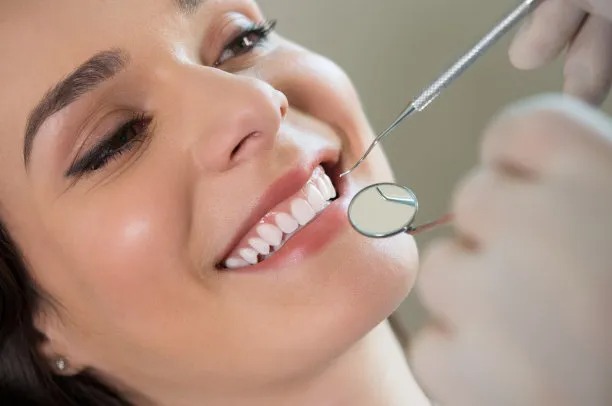Revolutionizing Smile Restoration Through Advanced Dental Implant Treatments for Optimal Oral Health and Aesthetic Appeal
Summary: In the realm of dentistry, advanced dental implant treatments are fundamentally transforming the way we approach smile restoration, encompassing both optimal oral health and aesthetic appeal. This article explores innovative techniques, the importance of biocompatibility, the integration of technology, and the psychological benefits of restoring ones smile through implants. Each aspect underscores how modern dental science not only heals but also enhances the overall quality of life for patients. Ultimately, we will conclude with a reflection on the future of dental implants in designing beautiful, healthy smiles.
1. Innovative Techniques in Dental Implants
Over the past few years, dental implant technology has witnessed remarkable advancements. Techniques such as guided surgery and immediate loading have revolutionized how implants are placed and restored. Guided surgery uses advanced imaging and computer-assisted technology to ensure precise placement of the implants, minimizing surgical trauma and recovery time. This approach allows for quicker and more predictable outcomes for patients.
Additionally, the concept of immediate loading has enabled patients to receive replacement teeth on the same day as their implant procedure. This significant advancement eliminates the waiting period traditionally associated with healing before the attachment of prosthetic teeth, leading to enhanced patient satisfaction and confidence.
Moreover, the development of mini dental implants offers a less invasive alternative for those with insufficient bone structure, further expanding eligibility for smile restoration. These innovative techniques not only improve efficiency but also ensure a smoother experience for patients, creating a more patient-centered approach in dental practice.
2. Importance of Biocompatibility in Implants
One critical aspect of dental implant technology is the focus on biocompatibility. Modern implants are crafted from materials that integrate seamlessly with the bodys natural tissues. Titanium, for instance, is commonly used due to its superior strength and ability to bond with bone, leading to long-lasting results.
Newer materials, such as zirconia, are emerging as alternative options due to their aesthetic appeal and lower allergic potential. These non-metallic implants mimic the color of natural teeth, thus providing an additional advantage for patients concerned about visible metal components.
The success of dental implants largely hinges on the bodys acceptance and integration of the materials used, underscoring the importance of continued research into biocompatibility. Understanding the biological responses to different materials will ensure that dental professionals can offer the best options for smile restoration tailored to individual patient needs.
3. Integration of Technology in Dental Practices
Technologys impact on dental implant treatments cannot be overstated. The use of 3D imaging and computer-aided design/manufacturing (CAD/CAM) systems has significantly altered the planning and execution of implant procedures. This technology allows for precise visualization of the dental anatomy, aiding in developing customized treatment plans that cater to each patients unique oral structure.
Moreover, digital workflows enhance collaboration between dental professionals and laboratories, ensuring that patients receive high-quality restorations that perfectly match their existing teeth. The result is a natural and aesthetically pleasing smile that aligns seamlessly with the patients facial features.
Furthermore, the advent of artificial intelligence and machine learning in dental practices promises to streamline diagnostics and treatment processes, leading to more efficient and effective patient care. As technology continues to evolve, the potential for innovation in dental implant treatments grows exponentially.
4. Psychological Benefits of Smile Restoration
The psychological impact of a smile is profound, influencing first impressions, social interactions, and overall self-esteem. Research has shown that individuals who restore their smiles through dental implants experience significant psychological benefits, including increased confidence and improved quality of life. The act of smiling more often can also lead to enhanced mood and wellbeing, fostering stronger relationships and social connections.
Moreover, patients often report a decrease in anxiety and depression associated with dental issues, as well as a renewed eagerness to engage in social situations. The psychological transformation resulting from a restored smile highlights the profound intersection between oral health and mental wellbeing.
In essence, dental implants are not merely a cosmetic solution; they represent a holistic approach to improving a persons quality of life. By addressing both functional and psychological aspects of oral health, dental implants can indeed revolutionize not just smiles, but lives.
Summary:
In conclusion, the advancements in dental implant treatments underscore a significant shift in how we view smile restoration, emphasizing both oral health and aesthetic value. From innovative techniques and material biocompatibility to the integration of cutting-edge technology and psychological benefits, dental implants bring transformative changes that last a lifetime.
As we reflect on the future of dental implants, we recognize their potential to not only restore smiles but to enhance the overall quality of life for individuals seeking both health and beauty in their dental aesthetics.
This article is compiled by Vickong Dental and the content is for reference only



